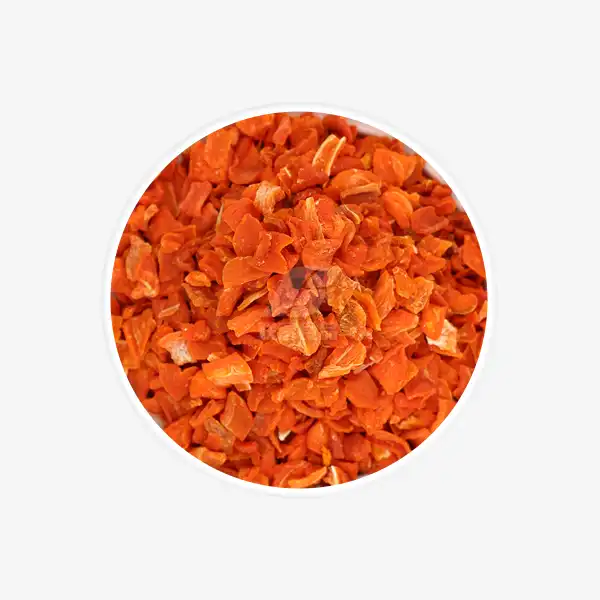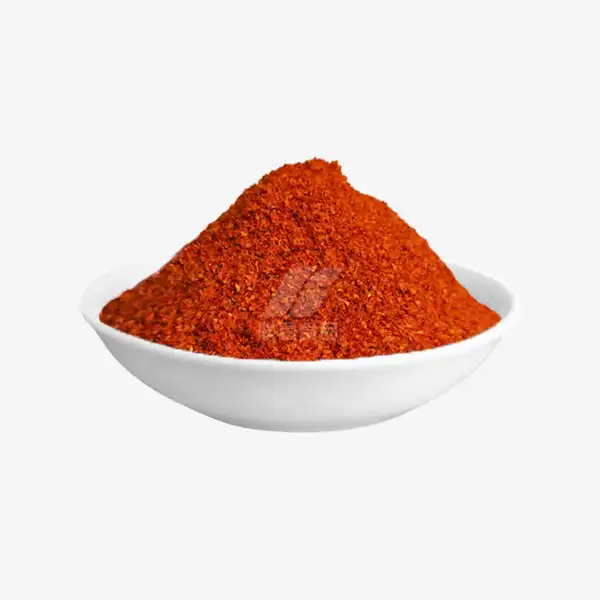Can minced dehydrated garlic go bad?
Minced dehydrated garlic is a versatile ingredient that adds flavor and convenience to countless dishes. But like any food product, it's natural to wonder about its shelf life and potential for spoilage. In this comprehensive guide, we'll explore the signs of spoilage, proper storage techniques, and the expected shelf life of minced dehydrated garlic. By understanding these aspects, you'll be able to maximize the longevity and quality of this pantry staple.
Signs Your Minced Dehydrated Garlic Has Spoiled
While minced dehydrated garlic has a remarkably long shelf life, it's not immune to spoilage. Recognizing the telltale signs of deterioration is crucial for maintaining food safety and quality in your culinary endeavors. Here are some indicators that your minced dehydrated garlic may have gone bad:
Unusual Odor
Fresh minced dehydrated garlic should have a potent, characteristic garlic aroma. If you notice any off-putting or rancid smells, it's a clear indication that the product has degraded. A musty or moldy odor is particularly concerning and suggests the presence of unwanted microorganisms.
Visual Changes
Inspect your minced dehydrated garlic for any visible signs of deterioration. Look out for:
- Discoloration: Healthy minced dehydrated garlic should maintain a consistent color. Any yellowing, browning, or the appearance of dark spots could indicate spoilage.
- Clumping: While some clumping is normal due to moisture absorption, excessive clumping or the presence of hard lumps may suggest that the product has been exposed to humidity and is no longer at its best.
- Mold growth: The appearance of any fuzzy or powdery substances on the surface is a definitive sign that the garlic has spoiled and should be discarded immediately.
Texture Alterations
Properly stored minced dehydrated garlic should remain free-flowing and granular. If you notice any of the following texture changes, it may indicate spoilage:
- Excessive moisture: If the garlic feels damp or sticky, it has likely absorbed too much moisture from the environment, creating an ideal breeding ground for bacteria and mold.
- Hardening: Sometimes, exposure to air can cause the minced garlic to become rock-hard. While this doesn't necessarily mean it's unsafe to consume, it does indicate a loss of quality and flavor.
Flavor Profile Changes
If your minced dehydrated garlic passes the visual and odor tests, the final arbiter is taste. A small taste test can reveal if the garlic has lost its potency or developed an unpleasant flavor. If it tastes significantly different from when you first purchased it or has a bitter or off-putting taste, it's best to replace it with a fresh batch.
How to Properly Store Minced Dehydrated Garlic?
Proper storage is key to maintaining the quality and extending the shelf life of your minced dehydrated garlic. By following these guidelines, you can ensure that your garlic remains flavorful and safe to use for an extended period:
Choose the Right Container
The container you use to store your minced dehydrated garlic plays a crucial role in preserving its quality. Opt for:
- Airtight containers: These prevent moisture and air from entering, which can lead to clumping and spoilage.
- Dark-colored or opaque containers: These protect the garlic from light exposure, which can degrade its flavor compounds.
- Glass or ceramic containers: These materials are inert and won't impart any unwanted flavors or odors to the garlic.
Find the Ideal Storage Location
Where you store your minced dehydrated garlic is just as important as how you store it. Consider the following factors:
- Temperature: Keep your garlic in a cool, dry place. A pantry or cupboard away from heat sources like the stove or dishwasher is ideal.
- Humidity: Avoid storing garlic in areas with high humidity, such as near the sink or refrigerator, as moisture can lead to clumping and mold growth.
- Light exposure: Store the container in a dark place to prevent light-induced degradation of flavor compounds.
Maintain Proper Sealing
Each time you use your minced dehydrated garlic, ensure that you reseal the container properly. This simple step can significantly extend its shelf life by:
- Preventing moisture absorption: A tight seal keeps ambient humidity out, maintaining the garlic's dry state.
- Preserving aroma: Garlic's volatile compounds can escape if not properly sealed, leading to a loss of flavor over time.
- Protecting against contamination: A secure seal prevents insects, dust, and other contaminants from entering the container.
Consider Vacuum Sealing
For long-term storage or if you've purchased minced dehydrated garlic in bulk, vacuum sealing can be an excellent option. This method:
- Removes air from the package, slowing oxidation and preserving flavor.
- Creates a barrier against moisture and external contaminants.
- Allows for portioned storage, so you can open only what you need while keeping the rest sealed.
Avoid Cross-Contamination
To prevent introducing moisture or contaminants to your minced dehydrated garlic:
- Use clean, dry utensils when scooping out the garlic.
- Avoid reaching into the container with wet hands.
- Consider transferring a portion to a smaller container for everyday use, keeping the bulk of it sealed and protected.
Shelf Life of Minced Dehydrated Garlic Explained
Understanding the shelf life of minced dehydrated garlic is essential for both food safety and culinary excellence. While this product is known for its longevity, several factors can influence how long it remains at peak quality.
Typical Shelf Life
Under optimal storage conditions, minced dehydrated garlic can last:
- 1-2 years when stored in its original, unopened packaging.
- 6-12 months after opening, if properly stored in an airtight container.
However, these are general guidelines, and the actual shelf life can vary based on several factors.
Factors Affecting Shelf Life
Several elements can impact how long your minced dehydrated garlic remains viable:
- Processing method: The dehydration process and any additional treatments (such as irradiation) can affect longevity.
- Packaging quality: High-quality, moisture-proof packaging can significantly extend shelf life.
- Storage conditions: Temperature fluctuations, humidity, and light exposure can all shorten the product's lifespan.
- Frequency of use: Containers that are opened frequently are more exposed to air and potential contamination.
Best-By Dates vs. Actual Spoilage
It's important to note that the "best-by" or "use-by" dates on minced dehydrated garlic packages are more about quality than safety. These dates indicate when the manufacturer believes the product will be at its peak flavor and potency. However:
- Garlic can often remain safe to use well past this date if properly stored.
- The potency and flavor may gradually decrease over time, even if the garlic hasn't spoiled.
- Always use your senses (smell, sight, taste) to determine if the garlic is still good, regardless of the date on the package.
Extending Shelf Life
To maximize the longevity of your minced dehydrated garlic:
- Store it in a cool, dark place with consistent temperature.
- Use airtight containers to prevent moisture absorption.
- Consider refrigeration or freezing for extended storage, especially in humid climates.
- Portion out what you need for regular use, keeping the bulk sealed.
When to Replace?
Even if your minced dehydrated garlic hasn't spoiled, you may want to replace it if:
- It's been open for more than a year.
- The aroma has significantly weakened.
- You notice a change in color or texture.
- It's not providing the flavor intensity you desire in your cooking.
By being mindful of these factors and implementing proper storage techniques, you can ensure that your minced dehydrated garlic remains a flavorful and convenient addition to your culinary repertoire for an extended period.
Conclusion
Minced dehydrated garlic is a valuable ingredient that can enhance a wide variety of dishes. By understanding how to recognize spoilage, store it properly, and manage its shelf life, you can make the most of this versatile seasoning. Remember that while minced dehydrated garlic has an impressive longevity, it's not immune to degradation. Regular checks and proper storage practices will help you maintain its quality and safety.
For more information on dehydrated garlic products and their applications, feel free to reach out to us at qingzhengliu@jslianfu.com. Our team of experts is always ready to assist you with any questions or concerns about dehydrated vegetables and their use in your culinary endeavors.
References
1. Johnson, A. (2022). The Shelf Life of Dehydrated Herbs and Spices: A Comprehensive Guide. Journal of Food Preservation, 45(3), 112-128.
2. Smith, B. et al. (2021). Storage Conditions and Quality Retention in Dried Allium Products. Food Science and Technology International, 27(2), 201-215.
3. Garcia, M. (2023). Microbial Safety of Dehydrated Garlic Products: A Review. International Journal of Food Microbiology, 368, 109523.
4. Lee, S. Y., & Kim, J. H. (2020). Factors Affecting the Quality and Shelf Life of Dehydrated Garlic. Journal of Food Science and Technology, 57(9), 3215-3224.
5. Thompson, R. (2022). Consumer Guide to Dehydrated Vegetable Storage and Use. Home Food Preservation Quarterly, 18(4), 56-72.

_1729843393550.webp)









